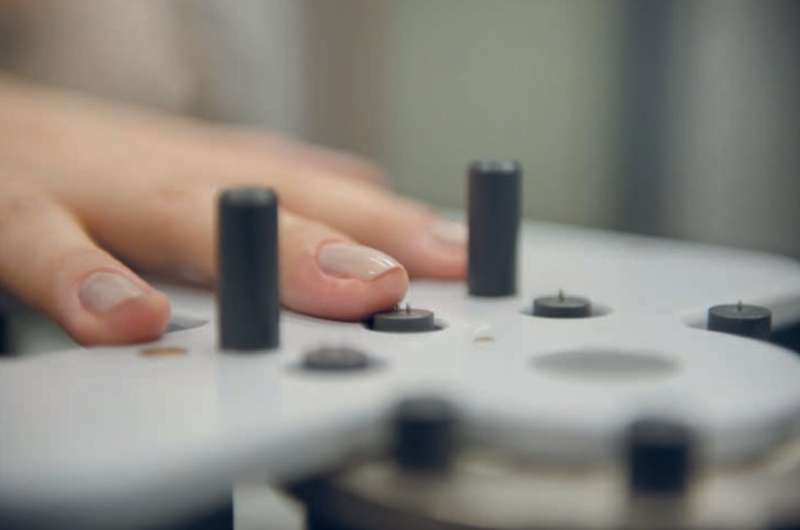
If we sincerely believe that our index finger is five times bigger than it really is, our sense of touch improves. Researchers at Ruhr University Bochum demonstrated that this is the case in an experiment in which the participants were put under professional hypnosis. When the participants signaled that they understood the opposite hypnotic suggestion that their index finger was five times smaller than it actually was, their sense of touch deteriorated accordingly.
The study shows that our tactile perception is affected and can be altered by our mental processes. The scientific community has been divided on this issue. Headed by PD Dr. Hubert Dinse, Professor Albert Newen and Professor Martin Tegenthoff, the researchers published their findings in the journal Scientific Reports on April 21, 2023.
Two needles feel like one
The researchers measured the tactile perception of their 24 test participants using the two-point discrimination method. This involves the index finger lying relaxed on a device with two needles repeatedly touching the finger painlessly but perceptibly.
“If the needles are far enough apart, we can easily distinguish two points of contact,” explains Hubert Dinse from the Neurological Clinic of Berufsgenossenschaftliches Universitätsklinikum Bergmannsheil. “But if the needles are very close together, we only feel the touch in one place.”
At a certain distance between the needles, the sensation changes from feeling two needles to feeling just one, although two are presented. This discrimination threshold is stable for each person given normal everyday consciousness.
If the finger were five times bigger
“We wanted to find out whether it’s possible to change this sensation threshold by activating a verbally articulated thought in a person,” explains Albert Newen from the Philosophy Institute II at Ruhr University Bochum.
The research team chose two thought cues: “Imagine your index finger is five times smaller” and “Imagine your index finger is five times bigger.” To specifically activate these semantic contents, the researchers used hypnotic suggestion. During a controlled state of hypnosis induced by a professional hypnotist, the participant was asked to sincerely accept the first belief for a series of tests and then the second.
The subjects took part in a total of four experiments to determine the sensation threshold in each case: under normal everyday consciousness, under hypnosis without suggestion, and under two hypnotic conditions with the suggestions of a bigger or smaller index finger.
Changes in the sense of touch
“Discrimination thresholds did not differ when measured during normal consciousness and hypnosis without suggestion. This supports our preliminary assumption that hypnosis alone doesn’t lead to changes,” says Martin Tegenthoff. “However, if the beliefs are induced as suggestions under hypnosis, we observe a systematic change in the tactile discrimination threshold.”
When a test person imagined that their index finger was five times bigger than it actually was, their discrimination threshold improved and they were able to feel two needles, even when they were closer together. When the suggestion was that their index finger was five times smaller, the discrimination threshold worsened. This means that it is the beliefs that change perception. The behavioral results were supported by parallel recordings of brain activity such as spontaneous EEG and sensory evoked potentials.
The scientific community is divided on the question of whether or not perceptual processes can be influenced by semantic content alone—experts refer to this as the question of cognitive penetrability of perception. “Our study provides another building block supporting the idea that such top-down influences of beliefs on perception do indeed exist,” says Hubert Dinse. “The beliefs we hold do indeed change how we experience the world.”
More information:
Marius Markmann et al, Hypnotic suggestions cognitively penetrate tactile perception through top-down modulation of semantic contents, Scientific Reports (2023). DOI: 10.1038/s41598-023-33108-z
Journal information:
Scientific Reports
Source: Read Full Article






